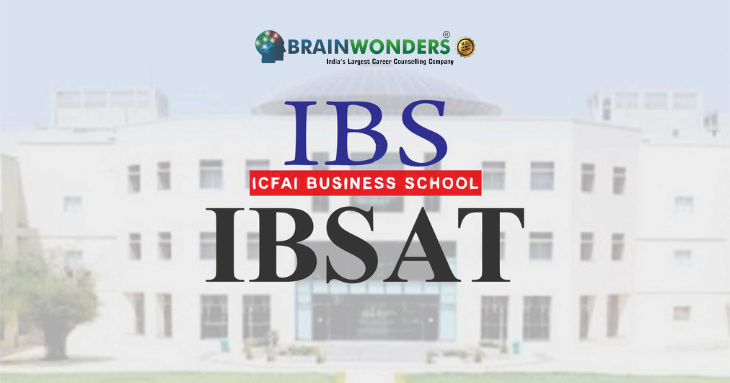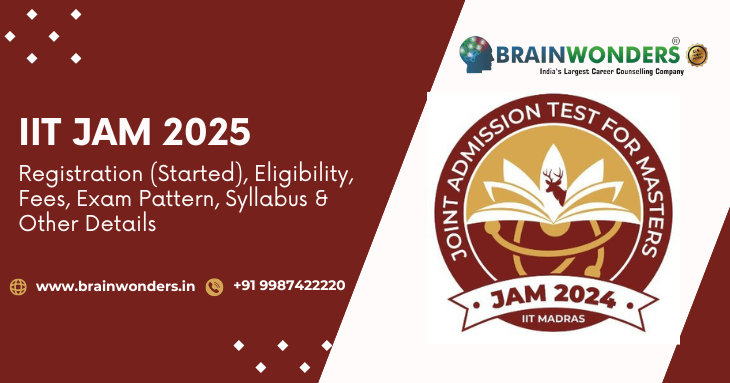

Take Brainwonders Career Test and make the right decisions for your college and course ahead
Worry not, because the Brainwonders test and guidance will not only help you know it, but also follow it!
Blog
17 February,2024 | By Brainwonders
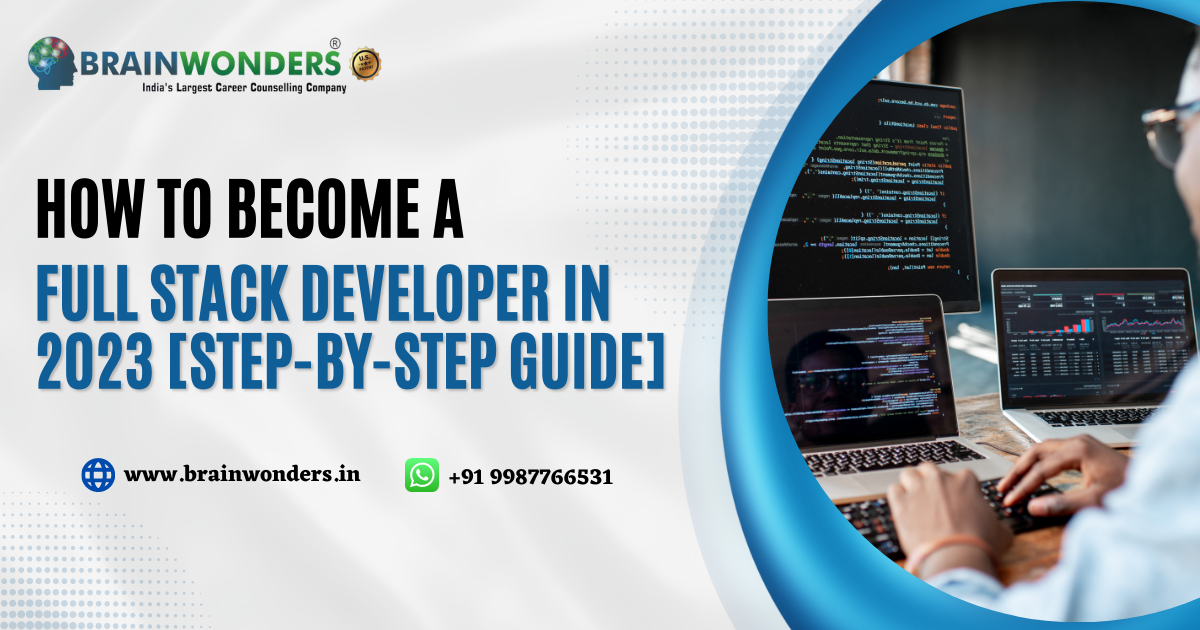
Full-stack developers are essential for the functionality of our daily websites and apps. While many web developers specialize in frontend development, full-stack developers have expertise in both areas. Enrolling in a Full Stack Web Developer Bootcamp can significantly benefit your career, as recruiters highly value this skill set.
The increasing demand for apps has led to a growing need for full-stack developers. If you're interested in becoming one, you've come to the right place. Becoming a full-stack developer may be challenging, but it's straightforward enough that even someone with no prior web development knowledge can achieve it in a few months. Read on to discover the steps to become a full-stack developer.
Before learning how to become a full-stack developer, it's essential to grasp the concept of a full-stack developer. Web development is divided into two categories: front end and back end. Backend development involves working behind the scenes on APIs, databases, servers, and other infrastructure components. On the other hand, the front end focuses on creating user interfaces, encompassing design and graphical elements.
A full-stack developer can handle frontend and frontend tasks, starting from scratch to build an entire app or website. Their versatility makes them highly valuable in the field of web development. If the front end represents the visible tip of an iceberg, the back end is the crucial part submerged beneath the water's surface. Both are indispensable for the proper functioning of any app or website.
The initial step to becoming a full-stack developer is understanding the role. Before enrolling in a coding boot camp, it's crucial to grasp that full-stack developers operate in both the front and front end of web applications. A full-stack developer possesses practical knowledge of CSS, JavaScript, and HTML and proficiency in multiple backend languages like Ruby and Python. The term' full stack' encompasses all the skills needed for web development, including building web pages and apps and ensuring smooth functionality. This occupational versatility allows developers to contribute to various aspects of projects, saving companies from financial losses. They can engage in sales, coding, customer service, and database management.
2. Frontend DFrontendnt: The initial step in the Full Stack Development Roadmap is Frontend dFrontendnt. Frontend, FrontendInterface (UI), is responsible for the overall appearance of a website, encompassing its interactivity and dynamism. To master this, it's crucial to thoroughly understand HTML, CSS, and JavaScript, including all their elements.
2.1 HTML (HyperText Markup Language)- HTML is a fundamental language utilized for constructing the structure of a website through tags. Begin with the entire application of HTML by crafting a small website incorporating all the essential elements. Experiment with tables and forms, and attempt to integrate images and links into the website to enhance its visual appeal and make your work more efficient. Click here to learn about the conventions and best practices of HTML.
Before proceeding to the next step, it is advisable to grasp the following fundamental concepts:
2.2 CSS (Cascading Style Sheets)- CSS is the next crucial step in the Full Stack Developer Roadmap. If you have a penchant for creativity, delving into CSS is necessary. With CSS, you can infuse colors into your website, add borders to headings or paragraphs, construct the navigation bar, experiment with icons, fonts, text, and more. Ensure your website's responsiveness, addressing how it appears on various screen sizes. Applying CSS in your website design depends on your specific use case.
Ensure you grasp these foundational concepts before proceeding to the next stage:
2.3 JavaScript - JavaScript serves as the programming language for the web, acting as the foundation for our browser's comprehension. It is instrumental in making content dynamic and interactive. JavaScript empowers developers to manage dynamic events, manipulate data, and communicate with the server. To enhance the user experience, thoroughly implementing JavaScript ensures your website becomes more vibrant.
Here are some well-known topics to study:
2.4 Frameworks- It is a foundation for constructing software applications, encompassing programs, code libraries, and compilers that collectively empower project or system development. Frameworks enhance the reusability of components. However, before delving into these frameworks, it is essential to grasp the prerequisites of HTML, CSS, and JavaScript. Mastering these fundamentals will significantly facilitate learning any frontend frontend framework.
You can select any framework, but it's advisable to familiarize yourself with the key topics covered in this article to ensure a comprehensive understanding.
Instances of frameworks include React, Angular, Vue, and more.
React is a JavaScript library utilized for crafting single-page frontend wfrontendcations. It follows a component-based approach, enhancing the aesthetic appeal of websites.
Below are the must-know topics of React that you should cover while learning React:
Angular is a JavaScript framework designed for frontend frontend. It was developed by Google and widely adopted in the industry. If you're delving into AngularJS, consider covering the following key topics:
3. Backend Development: Backend development involves the code that runs on the server, managing the logic to send and receive data between the client and server, along with the database that stores application data. This component comprises three main parts: a server, an application, and a database. Backend developers write code to transfer information from the database to the browser.
Essential skills for a backend developer include proficiency in programming languages, frameworks, databases, servers, and understanding APIs (Application Programming Interfaces).
The Node.js runtime environment and Express.js framework are utilized for MEAN and MERN Technologies.
Node.js is a runtime environment employed for executing JavaScript in backend scripting to facilitate interaction with the server. It is a trendy technology widely utilized across the software industry, experiencing a rapidly growing demand.
Express.js is a backend web application framework designed for building applications using Node.js, streamlining code, and simplifying the development process.
4. Database: The database is a data repository that allows for data management, including storage and retrieval. There are two main types of databases: relational (SQL) and non-relational (NoSQL). Some well-known databases include:
6. Build Projects: Once you have completed the theoretical aspects, engage in project development to attain proficiency in full-stack development. Implement a project's frontend aspects, including database management, to master web development. Building projects allows you to familiarize yourself with technical concepts, such as how APIs connect the front end to the back end and how the database handles data. Cultivating a habit of project development is critical to becoming a successful web developer.
Becoming a full-stack developer requires honing diverse skills and obtaining the necessary certifications to enhance your credentials. Here is a concise guide to becoming a full-stack developer.
The question often arises, "How long does it take to become a full-stack developer?" The answer depends on the time needed to master front-end and front-end skills. We've outlined the essential skills to give you a clear understanding of what it takes to become a full-stack developer. To progress in your web development career, consider enrolling in Web Development courses.
The initial step in becoming a full-stack developer from scratch involves identifying the frontend and frontend stacks to learn. Alongside the foundational elements of HTML and CSS, delving into JavaScript-based frameworks such as Angular or React is crucial. Additionally, acquiring knowledge about APIs is essential to establish a robust foundation for a full-stack developer.
Once you have grasped the fundamentals of HTML and CSS, put your knowledge to the test by creating simple websites. This exercise will help you evaluate your frontend frontend skills. Before delving into advanced JavaScript, acquaint yourself with jQuery. Mastering React or Angular may seem daunting, but a working knowledge of these frameworks will be sufficient initially. To refine your skills, take up projects that allow you to practice and improve.
Moving forward in your journey to becoming a full-stack web developer, the next step is to select your backend stack. A recommended starting point is to learn Node.js and Express.js, as both are essential for backend scripting. Backend development is vital in web development, as the application's efficiency relies on backend optimization.
Ensure you include programming languages like Java, Python, and PHP in your backend development skillset. These languages are crucial to ensure the smooth functionality of the application without any obstacles.
It's essential to remember that mastering backend skills is a gradual process. When contemplating how long it takes to become a full-stack developer, remember that skill perfection requires time and dedication. You'll gain a solid grasp of these skills as you work on more projects. Adding experience in writing backend code using languages like PHP, C#, or Python to your resume will contribute to your journey to becoming an accomplished full-stack developer.
In addition to mastering backend skills, acquiring knowledge about databases is crucial. Several popular choices include MySQL, MongoDB, Oracle Database, and SQLite. As a developer, you'll write codes to interact with these databases and perform relational mapping to retrieve data.
Expanding your understanding of caching options like Varnish and Redis can complement your database knowledge and enhance your capabilities as a full-stack developer.
To excel in full-stack development, it is essential to acquire web hosting skills. Web hosting platforms enable users to access your developed websites or applications on the World Wide Web. Familiarizing yourself with popular servers like Heroku, Google Cloud Platform, Amazon Web Services, and Microsoft Azure is crucial to understanding their usage and effectively deploying your projects.
Frontend frontends will be a significant focus of your learning journey, and becoming proficient in any of them can open up numerous job opportunities. Some well-known options include Angular, React, and Django. Developers utilize these frameworks to enhance and streamline website development. Full-stack developers often use Angular, which is particularly beneficial for single-page applications. Django, written in Python, supports databases such as Oracle and MySQL. React is valuable for creating user interfaces, while Symfony aids in building robust applications. Depending on your preferences, select the framework that aligns best with your goals.
You must possess a few soft skills if you still need to learn full-stack web development.
Start Your Career Journey Today - Click Here!
In the process of application development, multiple versions are created before deployment. Learning version control skills is crucial for a full-stack developer, and GitHub is one of the most popular platforms. Version control allows the development team to commit code to the ongoing project without the risk of overwriting the source code. Other essential version control skills to learn include Subversion and Git. Utilizing version control skills is a common practice among full-stack developers.
In the ever-evolving landscape of technology, it becomes essential for full-stack developers to assess and identify their skill sets. Thorough market research is a valuable approach to learning full-stack web development effectively. Begin by listing the developer skills you possess in frontend and frontend development. Then, analyze which additional skills you need to acquire to streamline and enhance your work efficiency.
Here are some steps to help you identify the skills gap:
By following these five steps, you can maintain focus on the industry's current and future demands, ensuring you stay relevant and well-equipped as a full-stack developer.
Start Your Career Journey Today - Click Here!
You may encounter various courses offering guidance when seeking to become a full-stack developer from scratch. With abundant options available, it is expected to feel overwhelmed when choosing the best full-stack developer course. However, you can select the best learning approach that suits you through boot camps, self-guided courses, or online learning platforms. The following list serves as a primary guide for you to consider:
Considering these courses, you can take the first steps towards mastering full-stack web development and shaping a successful career.
The question of how to learn full-stack development for free will eventually crop up in your mind as you go through this blog. Let the cost of coding classes not dampen your spirit, as plenty of online platforms can provide free resources. To master full-stack development, you must first learn the basics such as CSS, HTML, and JavaScript.
Change Your Life With Us - Click Here For Professional Guidance!
To become a full-stack developer, it is essential to carefully decide what skills to learn and set a realistic timeline to develop those skills efficiently and quickly. Before commencing your learning journey, analyze every aspect, from selecting a suitable learning format to setting a specific course completion date. A well-planned approach will help you make the most of your learning experience and progress towards achieving your goal as a full-stack developer.
As you embark on your journey to become a full-stack developer, you'll come across various educational paths to explore. As a newcomer, it's natural to feel overwhelmed by the abundance of choices. To aid in your decision-making process, consider the following resources, each offering unique formats to suit your learning preferences:
Considering these options, you can determine the most suitable educational route that aligns with your learning style and aspirations to excel as a full-stack developer.
Becoming a full-stack developer typically requires a minimum of three months. However, for beginners attending hands-on courses and boot camps, it may take 3-6 months to achieve proficiency in the field. Therefore, it's essential to set aside at least a year-long timetable to fully develop your knowledge and skills in the profession.
To kickstart your journey towards securing a job as a full-stack developer, the first step is to create a compelling portfolio. Consider the following tips when building your portfolio:
By following these tips, you can craft a portfolio that impresses potential employers and enhances your chances of landing a fulfilling role as a full-stack developer.
Having prepared your CV and portfolio, you are ready to embark on your job search journey. You can eventually secure your dream role as a full-stack developer with the proper skill set. The time required to become a full-stack developer can vary from a few months to one year, depending on your chosen approach to the search.
Recruiters seek candidates who demonstrate strong teamwork skills and integrate well into the company culture. Merely possessing knowledge of becoming a full-stack developer in Java and CSS may not suffice. It is crucial to research common behavioral questions from reputable sources on the internet and formulate well-prepared answers. Articulate how you handle daily challenges, manage stress, and navigate work disagreements to showcase your suitability for the role.
During an interview, the recruiter may request verbal explanations of your coding, which you'll need to demonstrate on a whiteboard. Explain the rationale behind your chosen methods and how you arrived at the solutions logically. If the recruiter has specific requirements, inquire about them and adjust your responses accordingly. Deliver precise and seamless explanations to enhance your chances of excelling in the interview process.
With the proper guidance, anyone has the potential to become a proficient full-stack web developer. If you wonder how to embark on this journey without prior experience, rest assured that you are with others. Countless individuals share identical inquiries, and the key to success is acquiring new skills.
Learning essential skills such as Python, CSS, PHP, HTML, and more is crucial to set yourself apart from the competition. As you expand your skill set, your chances of securing a lucrative job as a full-stack developer significantly increase.
Gaining in-depth knowledge about both backend and frontend frontend and databases will prove invaluable for becoming a proficient developer. You can achieve your goal in just a few months by dedicating time daily to practice and taking on new projects.
If you ask, "What do I need to learn to become a full-stack developer?" you are heading in the right direction. By enrolling in Web Development Courses Online with a Certificate, you can quickly acquire the essential skills to become a full-stack developer.
While having some prior knowledge of coding and programming languages can be advantageous, it's not a cause for concern if you are a complete beginner. With exemplary dedication and training, you can swiftly master the required skills and begin your journey as a competent full-stack developer.
Becoming a full-stack developer necessitates a combination of essential soft and hard skills. On the one hand, you should have solid and soft skills such as creativity, problem-solving abilities, and effective communication tactics. On the other hand, you must also demonstrate proficiency in various programming languages and possess competencies in HTML, JavaScript, or other network programs. This well-rounded skill set will pave the way for success as a full-stack developer.
Here are some advantages of becoming a full-stack developer:
There is a substantial demand for full-stack developers due to their comprehensive expertise in essential skills necessary for creating and customizing software products and services. This profession is also renowned as one of the highest-paying careers globally, owing to the swift advancements in technology and software development. It is projected that the role of a full-stack developer will experience a remarkable growth of 27% by 2024.
Although no compulsory educational requirements exist for becoming a full-stack developer, some recruiters may prefer candidates with degrees in computer engineering, software development, or related fields. However, even if you start from scratch, you can still apply for job roles in this field. The key is to master the necessary full-stack developer skills, build an impressive portfolio, and begin applying for jobs. Here are some typical job roles you can consider:
In India, the average annual salary of a full stack developer is ₹7,50,000, while a web developer earns an average of ₹5,80,000. This significant difference in earnings emphasizes the vast scope of a full-stack developer career in the Indian job market. The salary range can vary considerably, influenced by experience, skillset, and location, which explains the broad salary range observed.
India Rs 623319
USA $102,346
Australia 105,627 AUD
Germany €60,995
Canada C$86,703
Start Your Career Journey Today - Click Here!
Are you interested in becoming a full-stack developer in 2023? A proficient full-stack developer is well-versed in utilizing various full-stack developer tools; luckily, there are plenty of options. The following list includes tools suitable for novice developers to enhance their development process effortlessly.
1. Can anyone become a full-stack developer?
Ans: Given the appropriate guidance and skillset, anyone can embark on a career as a full-stack developer. Mastering the necessary tools and skills requires dedication and commitment.
2. Which language is best for full-stack developers?
Ans: No single language can be identified as the best. However, the most common ones developers often need to master include Python, C#, and Java.
3. How to become a full stack developer in 3 months?
Ans: Becoming a full-stack developer in just three months is achievable with complete dedication and focus. You can make significant progress by thoroughly learning frontend and frontend development and actively applying for jobs.
4. Can I become a full-stack developer in 6 months?
Ans: Boot camp training can be ideal if you aim to learn full-stack development in 6 months. On the other hand, a year-long course would be more suitable for achieving excellent proficiency in your coding capabilities.
5. How do you become a full-stack developer after the 12th?
Ans: Though rare, learning coding after 12th grade is possible. You can achieve this by obtaining a bachelor's degree in computer science, learning various programming languages, building a website, securing an internship, and pursuing opportunities either as a freelancer or within a company.
6. What are the full-stack web developer job trends?
Ans: In 2023, full-stack web developers rank among the most highly sought-after professionals in software development. Additionally, they are recognized as some of the highest-paid experts globally.
7. What are the technologies for full-stack developers?
Ans: Full-stack developers need a diverse skill set encompassing frontend and frontend languages and frameworks, database management systems, web hosting platforms, version control, and networking technologies to excel in their profession.
Take Brainwonders Career Test and make the right decisions for your college and course ahead
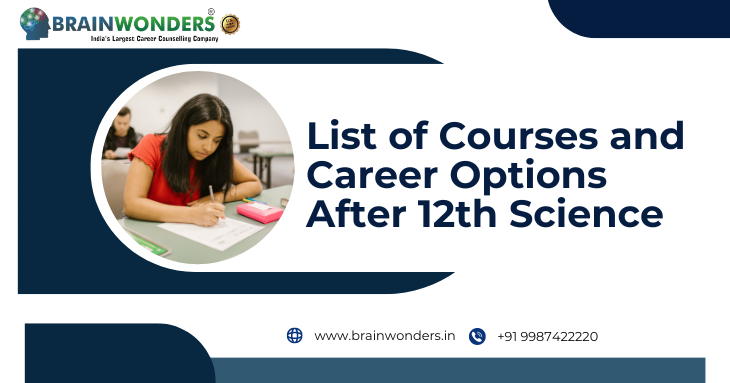
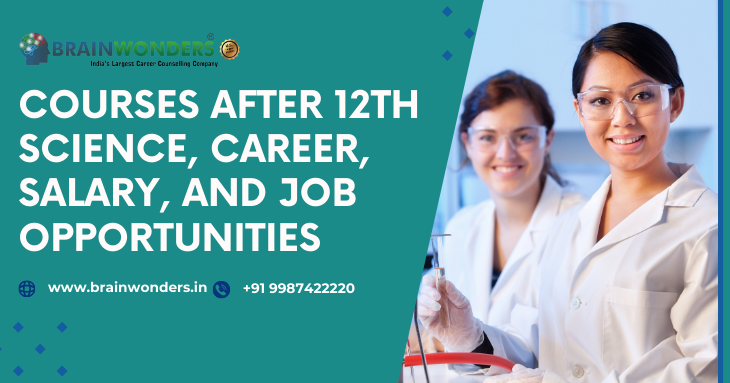
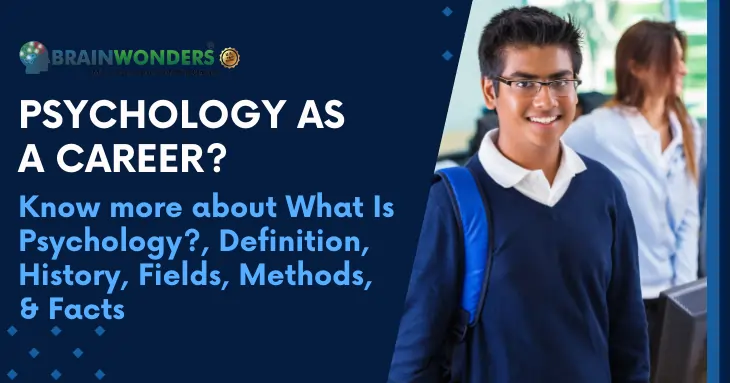
,_Syllabus,_Pattern,_Old_Question_Papers.png)
